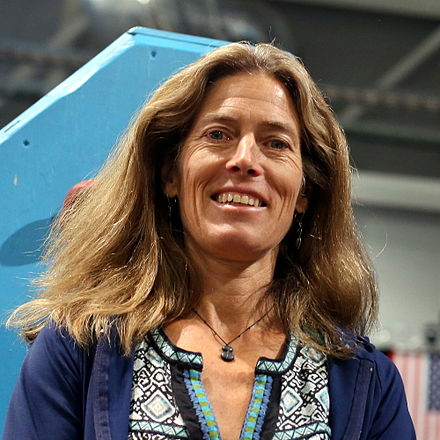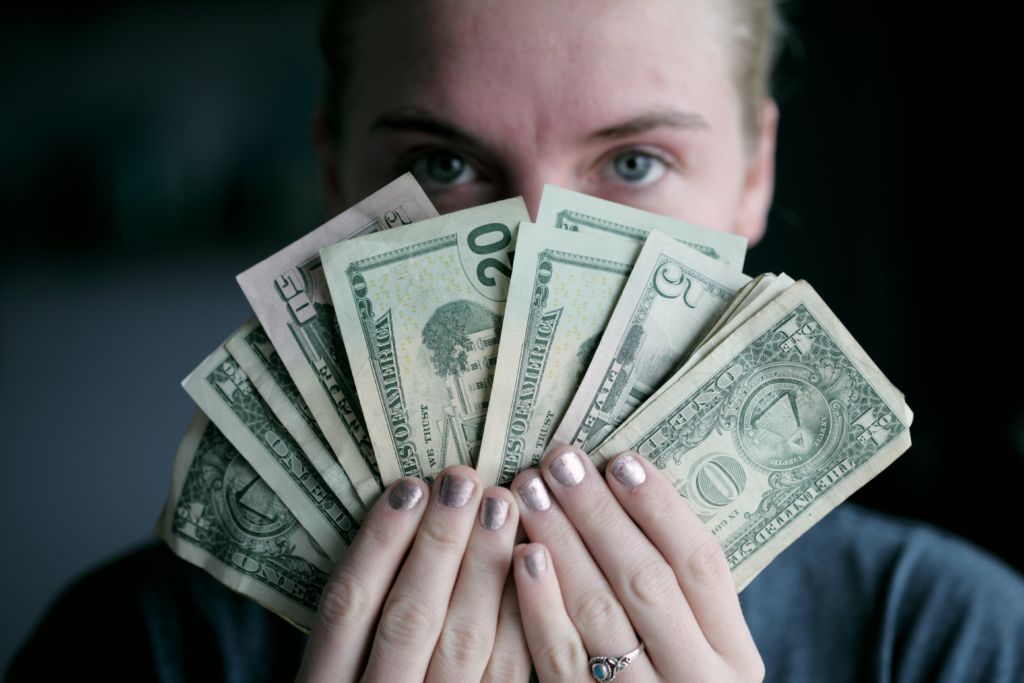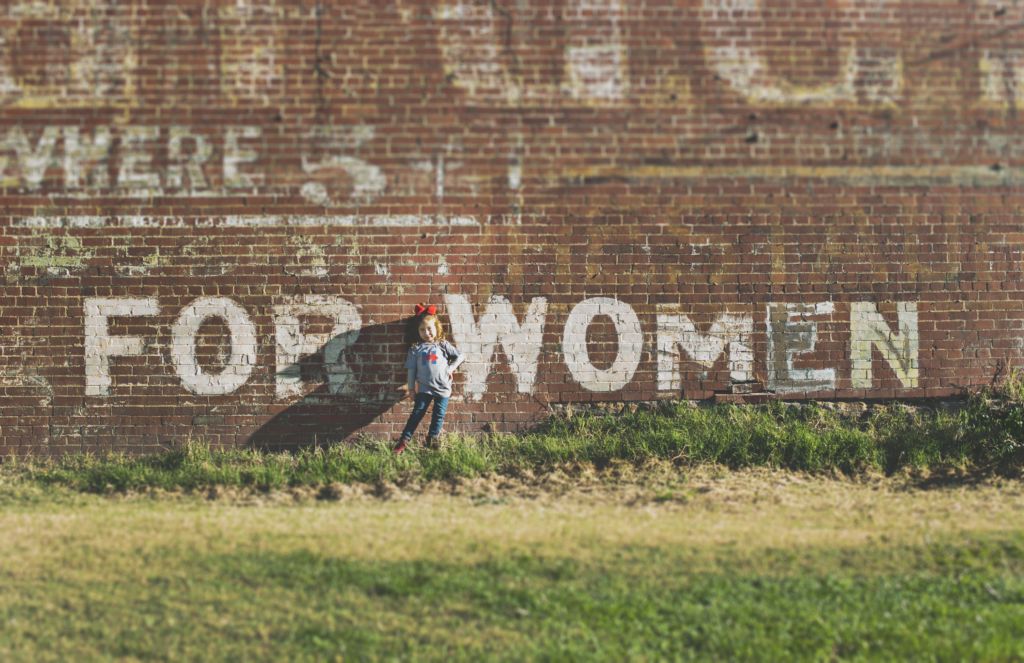As Women’s History Month comes to a close this March, we wanted to share some facts about famous women from community colleges that you definitely don’t know! Plus, we’ll talk about the gender pay gap, when to use Mrs., Ms., or Miss, and women-owned businesses.
Get ready for the grand finale of women’s history month with some little-known facts!
Four Famous Women Sports Heroes Who Started at Community Colleges
Women athletes often don’t get the attention they deserve. So, let us introduce four female all-stars who are alumnae of community colleges!
1. The Greatest Rock Climber of All Time and Women’s History

First is Lynn Hill, known as one of the greatest rock climbers of any gender. She is a double alumna of both Fullerton College and Santa Monica College, where she helped the school win a track state championship.
Hill won 30 international rock-climbing competitions between 1986 and 1992. She also became the first ever to free climb Yosemite park’s “Nose of El Capitan,” once considered impossible to conquer. The ascent took her four days, and when she returned to try the climb a second time, she accomplished the task in under 24 hours!
According to her bio, “Lynn changed the definition of what is possible in rock climbing … Over nineteen years later, Tommy Caldwell and Lynn are still the only two people in the world to have succeeded in making an all-free one-day ascent of The Nose.”
Lynn Hill’s Bio
As Jon Krakauer, author of Into Thin Air, says, “Lynn Hill isn’t just one of the best female climbers in the world — she is among the greatest rock climbers of all time.”
2. Famous for the “Flying Clutchman”

Flora “Flo” Hyman is known as the greatest American female volleyball player. She’s an alumna of El Camino College in Los Angeles County. She was 6’3” by the time she was 12 and grew to over 6’5” tall. While she was sensitive about her height as a young person, she used it to full advantage on the volleyball courts.
Hyman started to play professionally at the age of 16, and in 1984, her team won the Olympic silver medal. She was famous for the ”Flying Clutchman,” a fast, hard-impacting volleyball spike that travels at 110 mph!
Tragically, while playing professional volleyball in Japan, Hyman died suddenly in the middle of a game from a rare genetic condition she was unaware of, devastating fans worldwide. She was inducted into the Volleyball Hall of Fame in 1988. She also took 69th as the greatest female athlete of the 20th century in the 1999 Sports Illustrated.
According to the International Volleyball Hall of Fame, “It is impossible to quantify the impact Flo Hyman had on the sport of volleyball with just words. She was the most famous volleyball player of the time, not just here in the United States, but also worldwide.”
3. Record-Breaking Skating

One of the most decorated athletes in Olympic history, Bonnie Blair was also an alumna of Parkland College in Champaign, Illinois. Blair started skating as a toddler. She went to her first skating meet at four years old, and made the national skating team at 15!
She started participating in the Olympics at 19 years old and went on to win the 500-meter race, setting a world record in 1988. On top of multiple Olympic gold medals, Blair was also the Sportswoman of the Year in 1994’s Sports Illustrated. She was one of the top speed skaters of her era and is a member of the United States Olympic Hall of Fame.
4. A Famous Woman With the Nikes to Prove It

Sheryl Swoopes is known as “The Female Michael Jordan.” She is a graduate of South Plains College in Levelland, Texas, where she earned All-American twice. She also became Junior College Player of the Year in 1991.
Swoopes was the first player to be signed by the Women’s National Basketball Association (WNBA) when it formed in 1997. She is also the second player in WNBA history to win both the Regular-Season MVP award and the All-Star Game MVP award in the same season. In the Olympics, she helped her team win consecutive gold medals in 1996, 2000, and 2004.
At the 2011 WNBA All-Star Game, she was announced as one of the top 15 players in the 15-year history of the WNBA. Swoopes is also the first women’s basketball player to have a Nike shoe named after her: the “Air Swoopes.”
The Gender Pay Gap and Women’s History

Mind the gender pay gap! In honor of Women’s History Month, let’s talk about the gender pay gap … and how community colleges are helping.
In 2021, women made only 82 cents for every dollar men earned, according to Payscale.com. But that’s just the beginning. Last year, women’s labor force participation dipped to a 33-year low, likely because many had to default to caretaker roles at home when schools went remote.
And if they do ultimately return to the workforce? Women may face a wage dip, or the “unemployment penalty.” This is why payscale.com says, “COVID-19 may impact the gender and racial pay gap for years to come.”
Women’s History Fact Check: How Community Colleges Are Helping to Close the Gender Pay Gap

Here comes the good news. In the Pew Charitable Trust’s report “Pursuing the American Dream: Economic Mobility Across Generations,” a higher degree equates to a higher paycheck:
“Having a college degree has long been viewed as one of the most promising ways to climb the economic ladder, and for good reason,” the report states. “88 percent of those with a college degree exceed their parents’ family income, compared with 83 percent without a college degree.”
Here are some inspiring stats about how community colleges are helping women close the pay gap, from the Association of Colleges and Universities (AACU):
- More women than ever before — upwards of 4 million students of all ages, races, and ethnicities — rely on their local community colleges for higher ed and workforce prep.
- 40% of undergraduates attend community colleges, and most of them are women.
- In 2010, about 49% of community colleges provided on-campus childcare.
- Women are more likely than men to attend community college on the way to earning a bachelor’s degree in a STEM field.
While many factors influence the gender pay gap, we believe accessible education remains a vital solution. How’s that for a happy Women’s History (or Herstory!) Month?
Mrs., Ms., or Miss? Women’s History and Respectful Addresses

Excuse me, Miss? Mrs.? Ms.? Or Mx.? As we celebrate Women’s History Month, we can also learn new ways to support and empower women in our lives.
When we communicate, especially in community colleges, addressing students, alumni, and colleagues the right way is vital. Sometimes this can be confusing, especially when formally addressing a woman as Mrs., Ms., or Miss. These honorifics are standard when writing formal emails, letters, and even in conversation. But which is the right one to use?
In the past, Mrs. referred to a married woman, often followed by her husband’s last name. Meanwhile, Miss was used for younger, unmarried women and could stand alone or precede a last name. Unless you’re confident about someone’s preferred address, you should steer clear from using either of these and unintentionally offending your recipient!
On the other hand, Ms. (pronounced “Miz”) is a marital-status neutral title and, sometimes, the most respectful option. More and more women are adopting this title, whether married or unmarried. It’s seen as a less “possessive” option than Mrs. and more respectful than Miss.
So, which should you choose? If you’re able to, ask—this is the best way to ensure you’re addressing someone the correct way. However, if you’re writing a letter or email, asking might not be an option.
So, when you’re in doubt, Ms. it out. It’s the safest option while staying respectful and professional!
And of course, if you have a non-gender binary colleague who perhaps uses “they” pronouns, or a teammate who prefers a gender-free address? You could add “Mx.” (pronounced “mix” or “mux”) into the mix, depending on their preference.
Women’s History and “Ms”
If you’re interested, here is the history of “Ms.”:
A fairly new term, Ms. began gaining popularity in the 60s when feminist Sheila Michaels campaigned to normalize a prefix that didn’t define a woman’s relationship status. In 1986, it became even more mainstream when the New York Times started using Ms. as an honorific in its news and columns.
Today, many women are adopting the term as the new norm for its relationship ambiguity.
Women-Owned Businesses Making Women’s History

Let’s get down to business. Women’s History Month shines a spotlight on female leaders who help open doors and opportunities for other women. Currently, we find women are stepping up in leadership roles. But there’s still a lot more work to do when it comes to gender inclusivity, especially in the workplace.
Even though it’s been found that businesses with female CEOs and CFOs are more profitable, most businesses are still lagging behind with representation at a senior level.
In 2021, it was found only 8 percent of Fortune 500 companies had women appointed to leadership positions. About 52 percent of women hold the role of Chief Marketing Officer. However, women of color only account for 13 percent of this position and are severely underrepresented in other leadership roles.
Things are a bit more progressive in higher education. According to The Association of Women in Community Colleges, community colleges have a larger number of female presidents compared to four-year colleges, nearing about 30 percent.
Famous Women in Business for Women’s History Month
Of course, there’s plenty more work to do when it comes to inclusivity. But industries being dominated by female entrepreneurs are creating more opportunities for women to lead. Check out a few inspiring female CEOs below:
Angela Richardson, CEO of PUR Home
Richardson is a famous woman and businessperson. Co-founder and CEO of the natural cleaning product line, PUR home, Richardson conceptualized the company in 2015 before launching in 2017. Her company served 15,000 customers and cashed in a revenue of $300,000 in 2020.
Rachel Dori, CEO of Daily Harvest
For famous women who are unstoppable, check out Rachel Dori. Dori’s company took off at the height of the pandemic, with a spike in at-home food delivery services. The company was valued at $1.1 billion last year after a round of funding and gained about $250 million in revenue in 2020.
Beatrice Dixon, CEO of The Honey Pot Company
Dixon launched her feminine care brand back in 2014 and became one of the first 40 women of color to raise $1 million in venture capital. Today, the company is a multi-million-dollar brand that is sold in retailers around the US.
As a female-owned business ourselves, Interact Communications believes equality and gender inclusivity is vital for growth and innovation. Through our work, we’ve found community colleges help set the stage for students to pursue their passion and discover opportunities to contribute to representation in their field.
Keep in mind all of those who are paving the way as we celebrate Women’s History Month!




